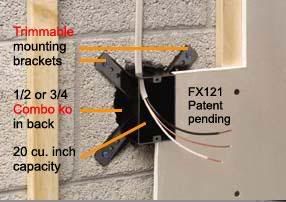czars
Czars
- Location
- West Melbourne, FL
- Occupation
- Florida Certified Electrical Contractor
Remodeling an old house with concrete block walls, 1x2 furring strips and drywall. Old wallboard has been removed along with some of the furring strips. Block walls are knocked out behind outlet and switches boxes. I would like to hear about your preferred method for installing wiring for wall outlets and switches.




